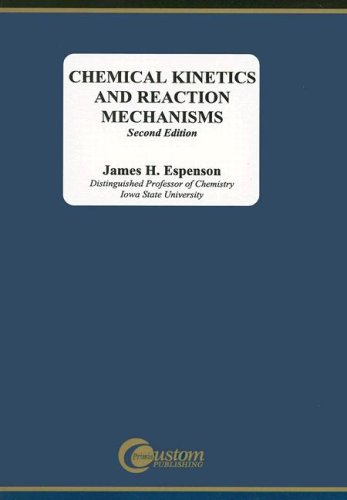Chemical kinetics and reaction mechanisms book download
Par moore leslie le mardi, novembre 3 2015, 20:21 - Lien permanent
Chemical kinetics and reaction mechanisms by James H. Espenson


Chemical kinetics and reaction mechanisms James H. Espenson ebook
Format: djvu
Page: 296
Publisher: McGraw-Hill Science/Engineering/Math
ISBN: 0070202605, 9780070202603
All these questions can be answered by the branch of chemistry, which deals with the study of reaction rates and their mechanisms, called chemical kinetics. The rates of chemical processes and their variation with conditions have been studied for many years, usually for the purpose of determining reaction mechanisms. What we discovered here is that tunneling can dominate a reaction mechanism sufficiently to redirect the outcome away from traditional kinetic control. Radioactive isotopes as well as stable isotopes can The rate constant obtained from kinetic data is most important since it tells the effect of changes in the structure of the reactants, the solvent, ionic strength, addition of catalyst etc. "A Comprehensive Chemical Kinetic Reaction Mechanism for Oxidation and Pyrolysis of Propane and Propene." Combustion Science and Technology 37(3-4): 117-152. In this review, I will show a few significant research outcomes about kinetic mechanism and modeling of the thermal-chemical conversion of lignin over the fast five years. Posted by Aswathy at 9:55 AM · Email ThisBlogThis! The mechanism for nickel-catalyzed hydrosilylation of benzaldehyde has been studied by chemical kinetics, identification of reaction intermediates, and isotope-labeling studies. Informations about the reaction mechanism can be obtained by using molecules that have been isotopically labeled and tracing the path of the reaction in this way. Mechanism and detailed kinetic modeling of Scheme of main reaction participants and pathways of the depolymerization of wheat straw lignin; gaseous products of ethanol and formic acid gasification take part in reactions 2−4, 7−9, 14, and 17 [3]. A systematic methodology for the determination of solid-phase kinetics This methodology consists in the correlation of a mathematical representation of a reaction mechanism with data from previous thermogravimetric experiments. The one-dimensional, transient, governing equations for smoldering combustion in a porous fuel are solved accounting for improved solid-phase chemical kinetics. Notes for Form 6 Chemistry (STPM level) featuring reaction order and reaction mechanism under the topic reaction kinetics.
Basic Otorhinolaryngology: A Step-by-Step Learning Guide download
The Anaesthesia Science Viva Book book